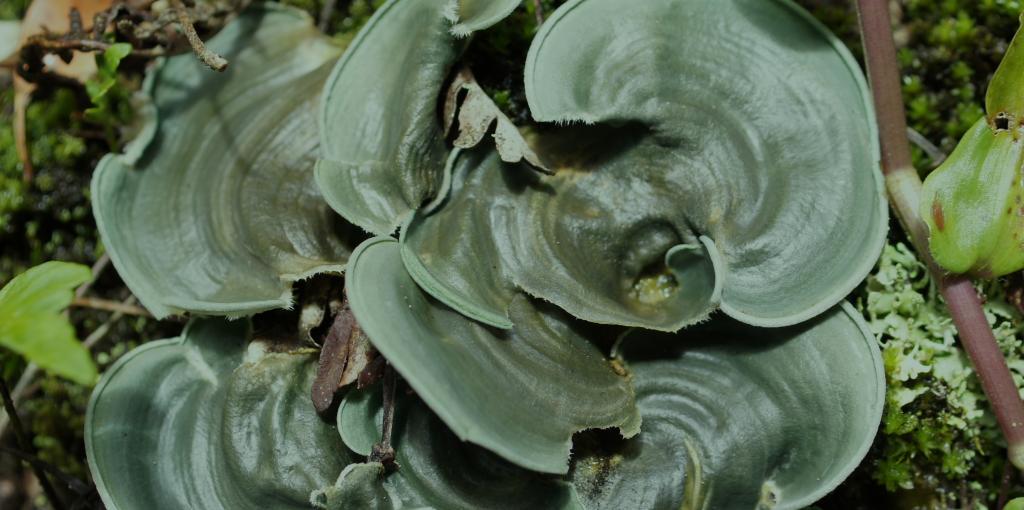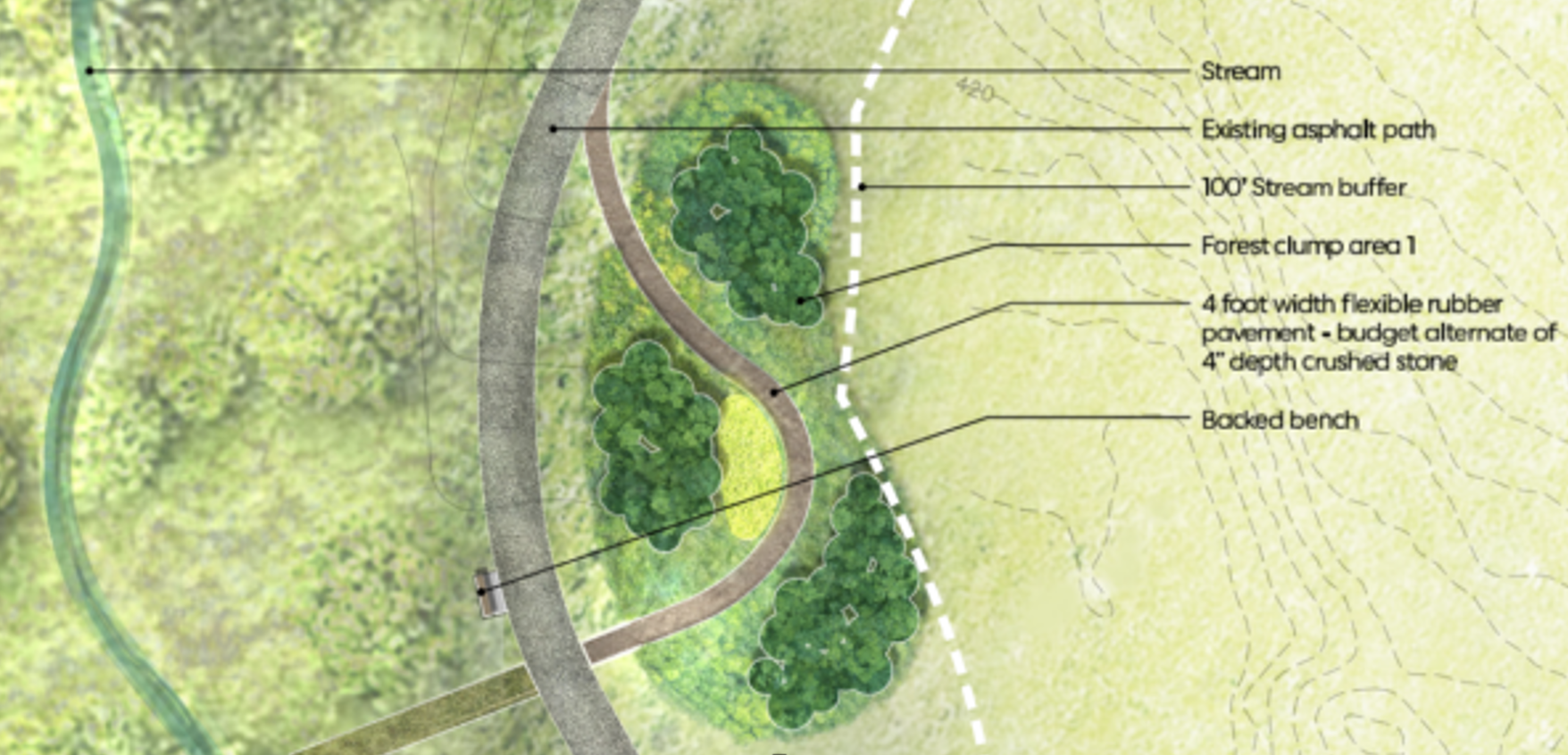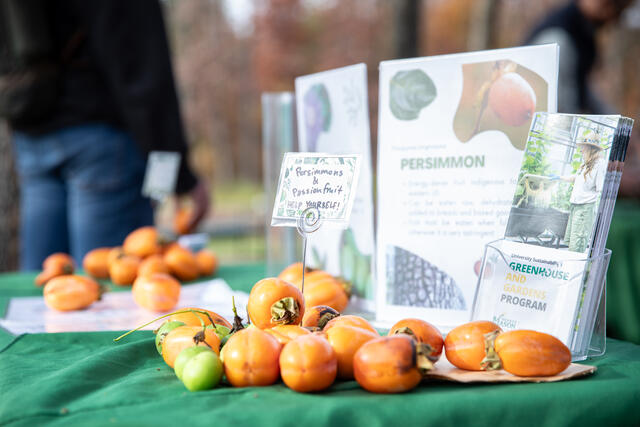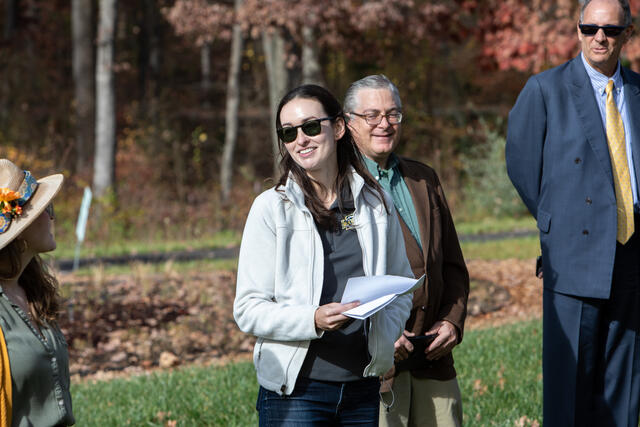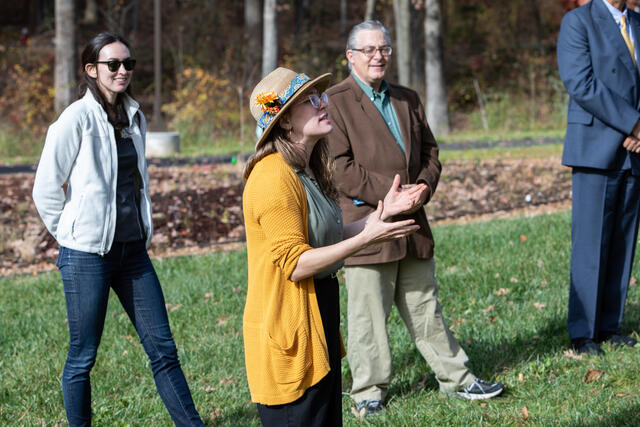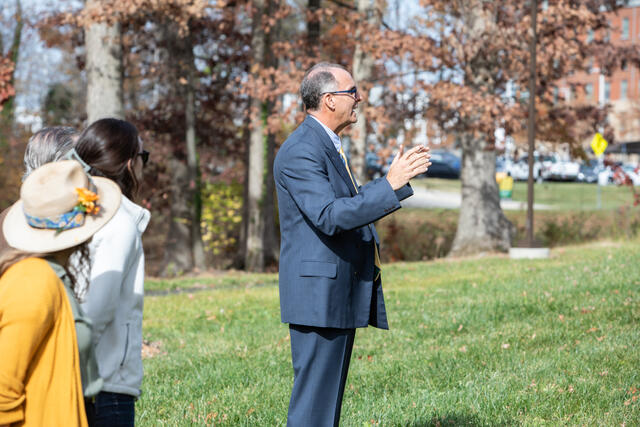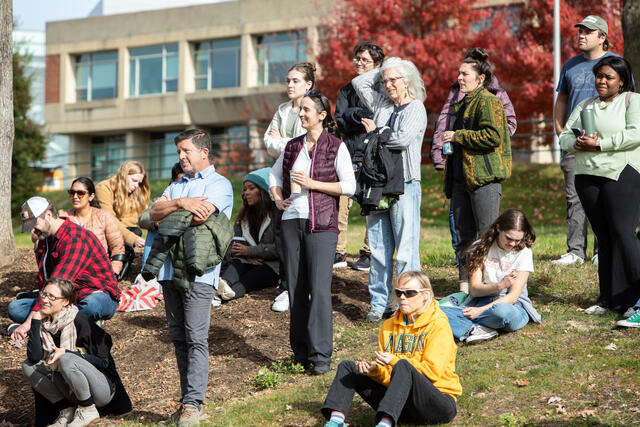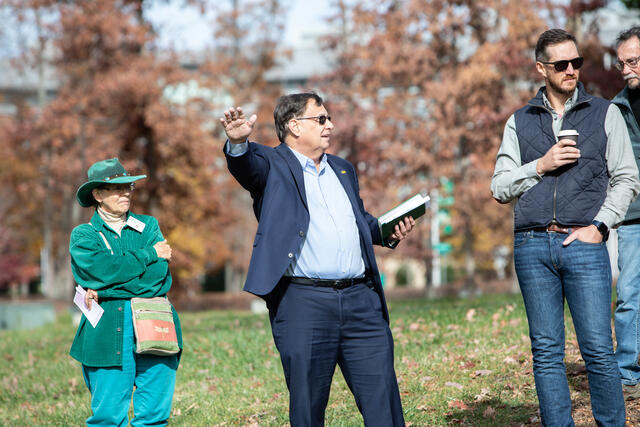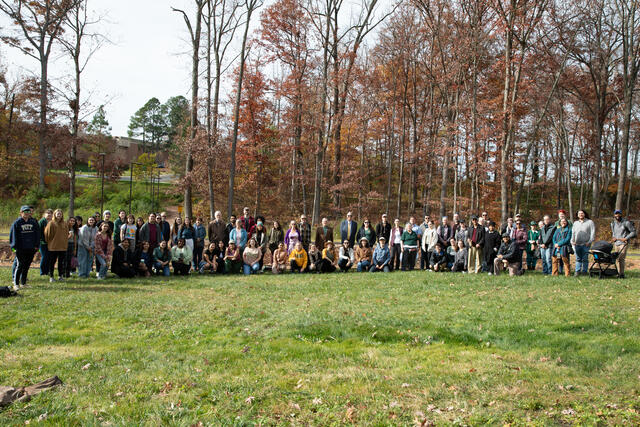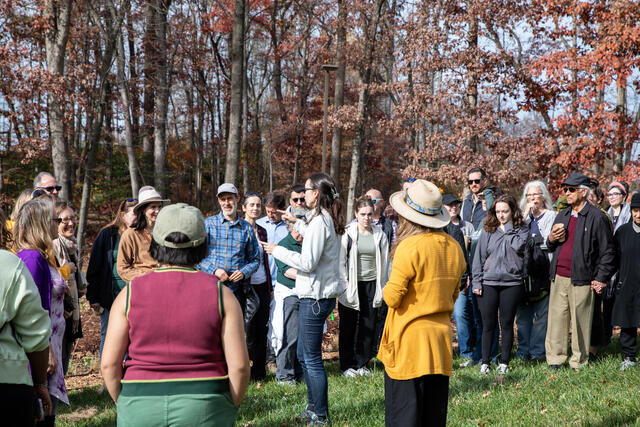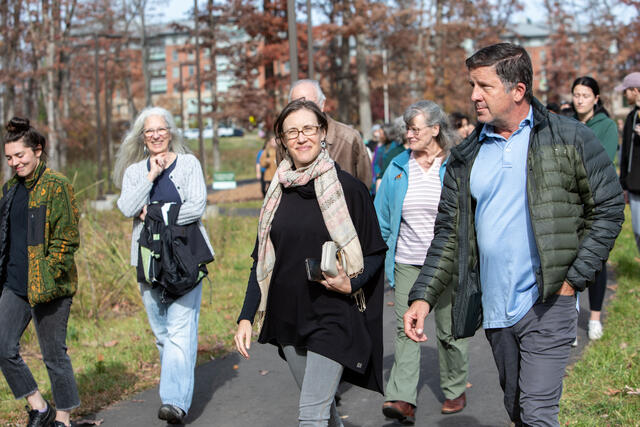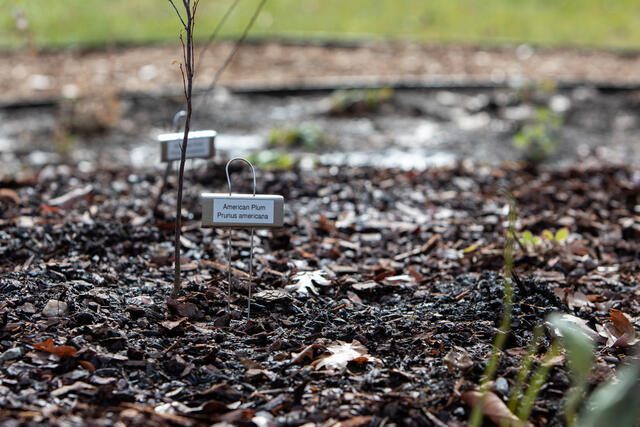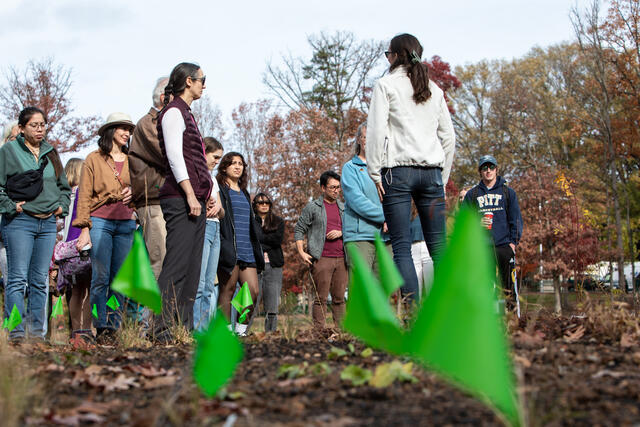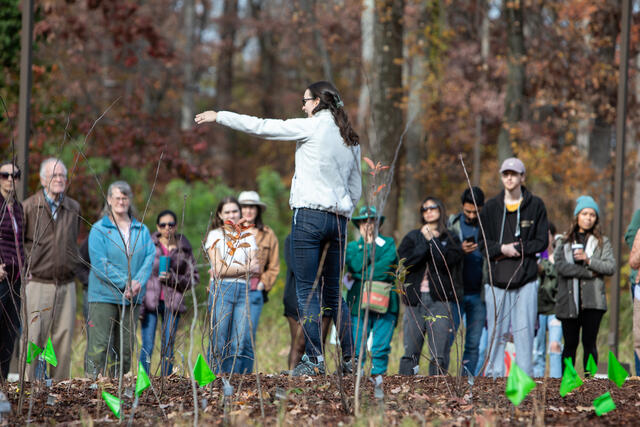Admission CTAs
Mason Foragers' Forest groundbreaking and tour for campus and community on November 17
George Mason University is breaking new ground on a natural living lab space that will provide the university and surrounding community free and accessible native foods and safe foraging opportunities. Aptly named the “Foragers’ Forest,” this area offers visitors access to a number of safe-to-eat resources, while also serving as a wildlife habitat, providing climate benefits and restored ecosystem services.
With funding from an internally-matched Amazon Web Services grant, the Foragers’ Forest will begin with the installation of 1,770 perennial native plants in November 2023. The planting area covers 5,300 square feet in total, located in two groves near the stream between Aquia Creek Lane and Patriot’s Circle on Mason’s Fairfax Campus.
Those leading this initiative include Environmental Science and Policy MS student and Lead Forest Maker Sarah Roth, Environmental Science and Policy Professor Dann Sklarew, and University Sustainability Program Manager Doni Nolan, with administrative support from Mason’s College of Science, Mason Facilities and University Sustainability.
“With Amazon Web Services’ visionary investment, we are planting America’s first campus-based, native food forest dedicated to feeding both human and animal foragers,” said Sklarew. “Our site also will serve as a new Mason Living Lab where students can experiment and ‘act local’ to promote food security, wildlife conservation, climate resilience, and other opportunities to advance sustainability.”
Faculty from the College of Science and others are collaborating to identify both curricular and Mason Impact scholarly innovations to utilize this space as a premiere living laboratory. Each of the two groves will include tight clusters of closely planted native trees, shrubs, and herbaceous plants similar to the approach used by some Northern Virginia local government ecological restoration projects. Pathways, seating and signage will lead visitors to forage, learn about the site’s principles and propagation, and enjoy the scenery.
“What I love about this project is that it blends everything I’m passionate about: native plants, ecological restoration, and bringing people closer to nature. Our future depends on us building spaces that serve people and wildlife, and we hope this offers a blueprint others can take and improve,” said Roth.
The Foragers’ Forest groundbreaking event on Friday, November 17 will begin at 10:30 a.m. with welcome remarks from College of Science Dean Fernando Miralles-Wilhelm. Attendees will then go on a walk through the space with foraging expert, Matt Cohen, who will explain how to identify what to eat and ways to safely and legally forage wild foods. All at the university and the local community are welcome to attend.
“I hear from so many students that want more edible and wild plantings on campus,” said Nolan. “It’s really important that we create and preserve more wild areas that provide shade, food and refuge for both wildlife and students.”
Dean Miralles-Wilhelm said that the College of Science’s involvement is a natural extension of its existing commitment to sustainability and innovative solutions to global issues such as food scarcity. “While this will increase access to nutritious foods, I’m also excited that it will provide a distinctive learning experience for our students and enhance research and scholarship on food security and environmental conservation,” he said.
Register to attend the Foragers’ Forest groundbreaking event using the sustainable sign-ups portal.
